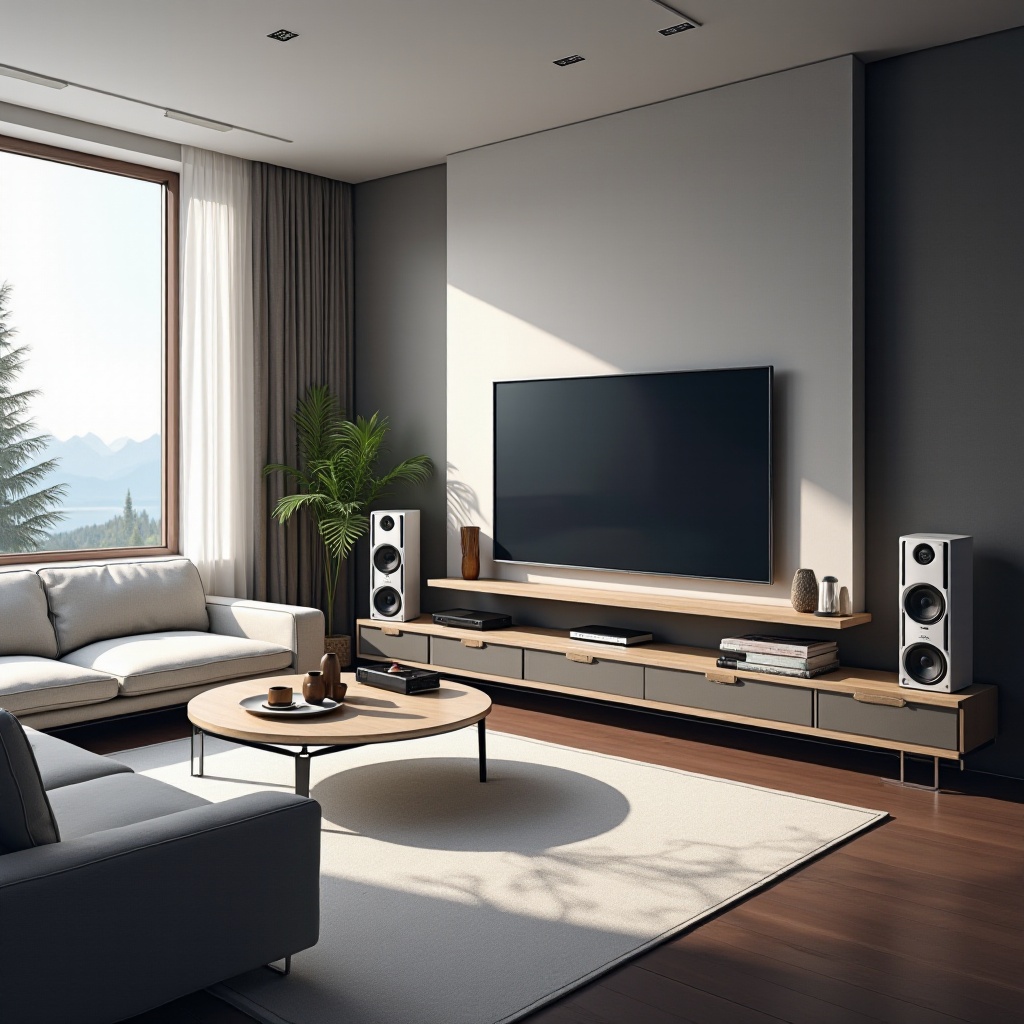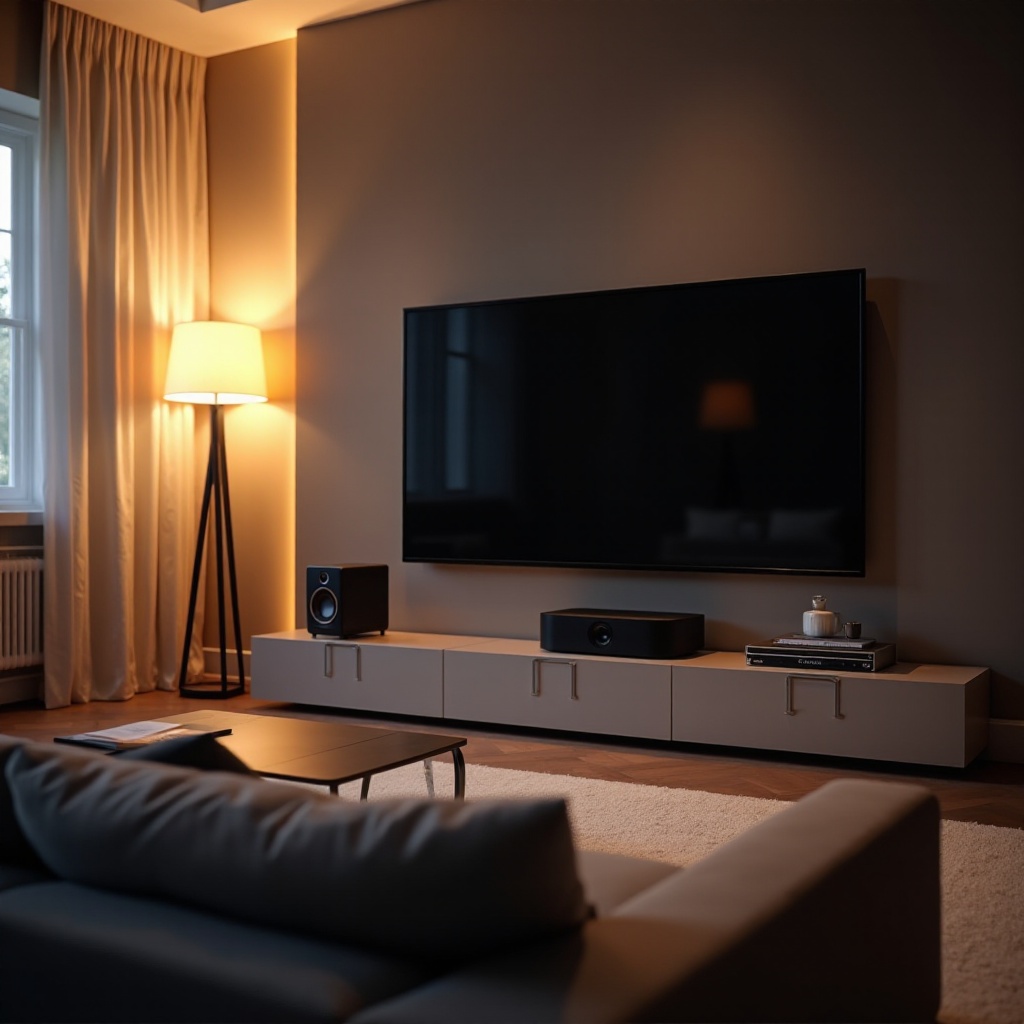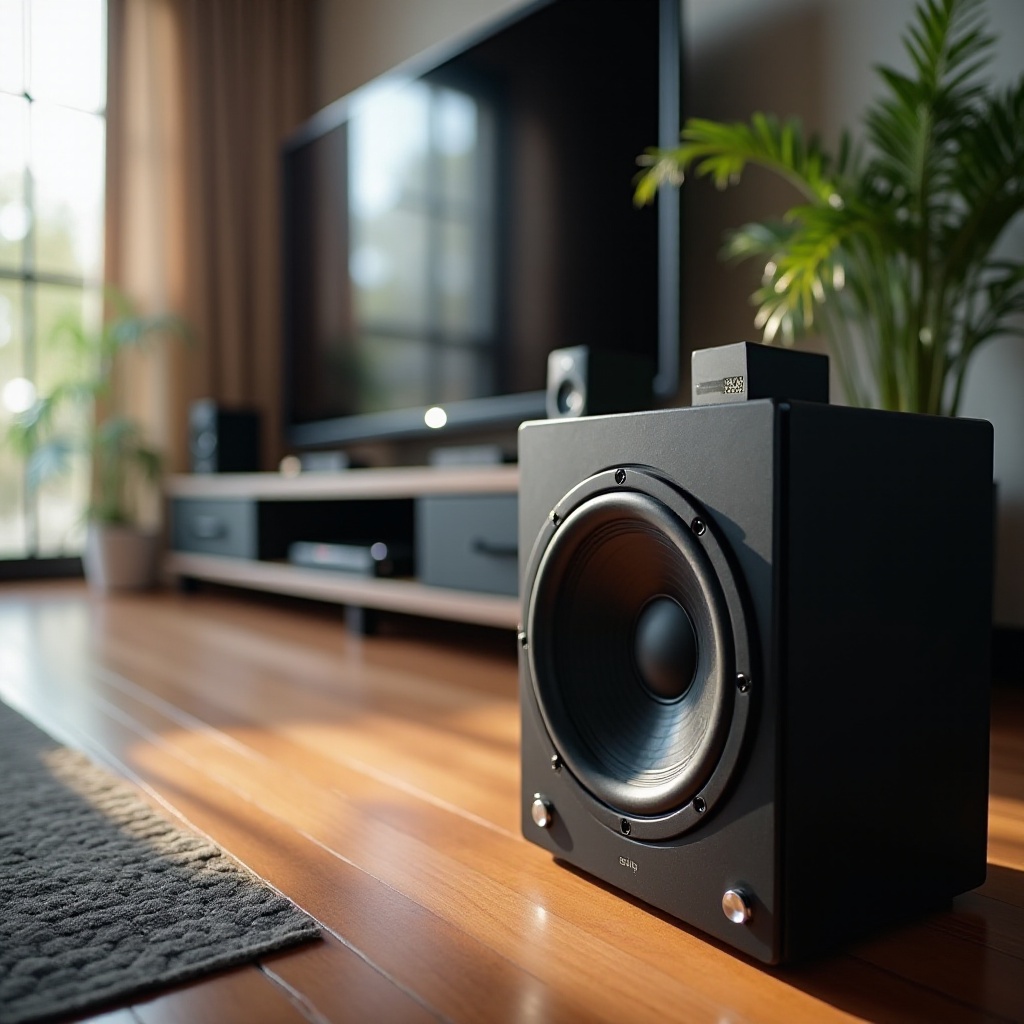Introduction
Subwoofer placement is more important than many realize. The subwoofer is responsible for delivering the deep bass that enhances your audio experience. When placed correctly, it enriches the texture of sound across movies, music, and games. Conversely, poor placement leads to uneven sound distribution, diminishing your listening pleasure. This guide will help you understand the significance of subwoofer placement and how to achieve the best results.

The Importance of Subwoofer Placement
Subwoofers emit low-frequency sound waves that interact uniquely with a room's acoustics. Correct placement ensures these waves are evenly distributed, avoiding sound peaks that can overpower or nulls that can diminish the bass impact. The notion that a subwoofer can be placed anywhere without affecting sound quality is a common misconception. In reality, bass and acoustic dynamics play a crucial role in your listening environment.
These dynamics are affected by how sound waves bounce off walls and furniture, potentially creating areas of compromised sound quality. To avoid these issues, understanding how sound interacts with your specific room is essential. This knowledge helps dispel myths, like randomly placing a subwoofer in an available space, which can lead to poor audio quality.
How Room Acoustics Affect Sound
The characteristics of your room significantly impact audio performance. Room size, shape, and materials all influence how sound travels. Smaller rooms can cause sound waves to reverberate excessively, while larger spaces might disperse sound unevenly. Objects like carpets, curtains, and furniture play a role in absorbing and reflecting sound, affecting clarity and depth.
Determining the acoustic sweet spots—areas where sound is naturally amplified—is crucial. Exploring these areas can reveal optimum locations for your subwoofer. By understanding these acoustic dynamics, you equip yourself with the knowledge to improve your audio setup significantly.
Practical Guidelines for Subwoofer Placement
Armed with insights into your room's acoustics, you can explore practical placement strategies. Approach placement with these options:
- Corners: Utilizing the corners of a room can enhance bass response since walls reinforce the sound waves.
- Front Wall: Keeping the subwoofer against the front wall allows for consistent sound integration with your primary speakers.
- Avoid Symmetrical Placement: Placing subwoofers symmetrically may result in uneven sound distribution.
Experiment with these placements, considering the acoustic sweet spots you've identified. Your goal is to achieve a harmonious blend of sound that suits your preferences and room characteristics.
Advanced Techniques for Optimal Sound
For audiophiles seeking to elevate their listening experience, advanced techniques provide added refinement. Deploying multiple subwoofers can balance sound distribution across the room, mitigating audio nulls and peaks. Asymmetrical placement of these subwoofers can further enhance even sound coverage.
Modern audio equipment often includes calibration tools and software, which analyze your room's acoustics and recommend adjustments. Embracing this technology can optimize bass response, ensuring consistent audio quality across various listening points.

Troubleshooting Common Placement Issues
Despite carefully positioning your subwoofer, some challenges like reverberation and phase delay may arise. Reverberation involves lingering echoes caused by sound waves reflecting off hard surfaces. To address this, consider these steps:
- Incorporate soft furnishings like rugs and drapes to absorb excess sound.
- Reposition furniture to diffuse sound waves uniformly.
Phase issues occur when the subwoofer fails to synchronize properly with other speakers, leading to audio delay or inconsistencies. Adjusting phase settings or repositioning the subwoofer can help align it with the main speakers, achieving coherent sound output.

Conclusion
Investing thought and effort into subwoofer placement profoundly enhances your audio setup. Understanding room acoustics, applying strategic placement techniques, and troubleshooting common issues collectively foster an enriching audio experience. Encouraging experimentation and utilizing modern tools transforms your environment into an acoustic haven, where subwoofer placement leaves a profound impact.
Frequently Asked Questions
How do I know if my subwoofer placement is correct?
Experiment with different positions until the bass is smooth and balanced with other frequencies. Use bass-heavy music and fine-tune the volume and crossover settings.
Can multiple subwoofers improve sound quality?
Yes, employing multiple subwoofers can flatten bass response across a room, reducing nulls and peaks, resulting in a more even and immersive sound experience.
What tools can help with subwoofer placement?
Utilize room calibration tools and audio measurement apps. These help analyze your room’s acoustics and provide suggestions for optimal subwoofer placement.
